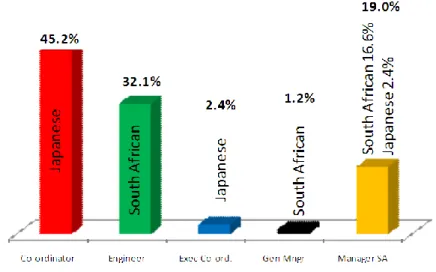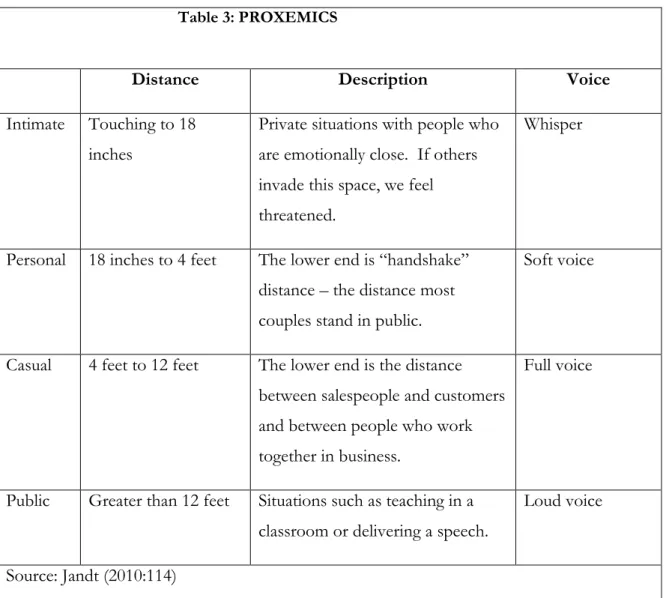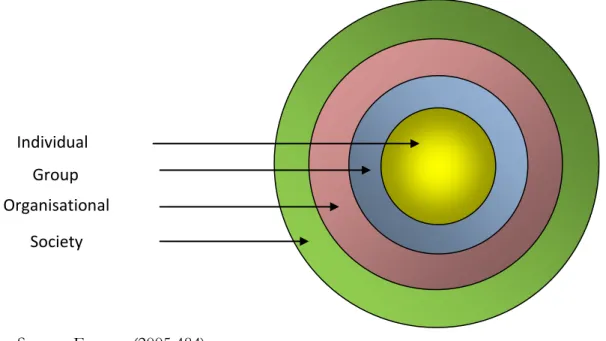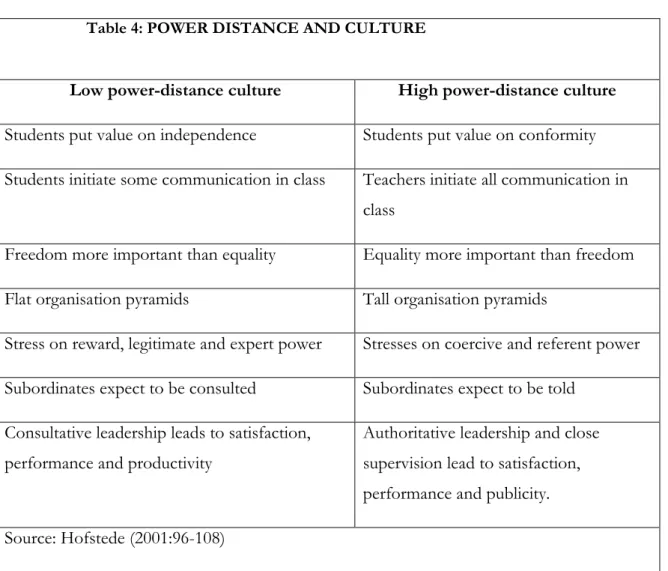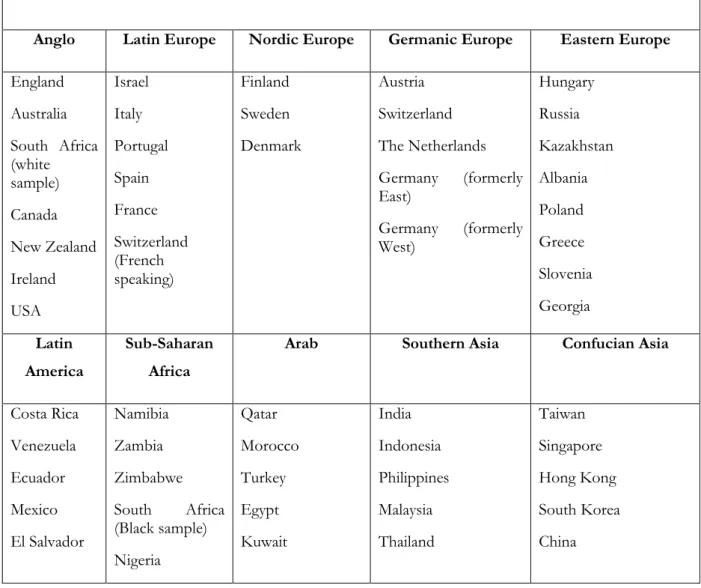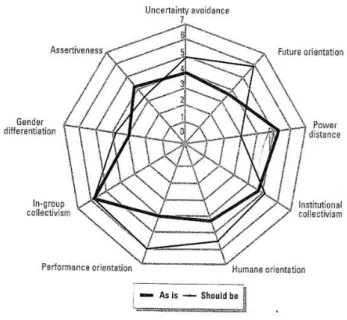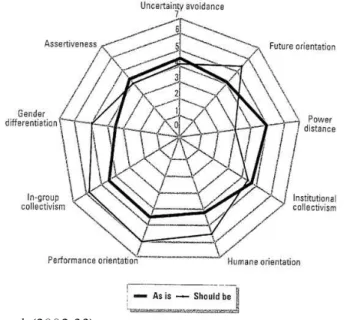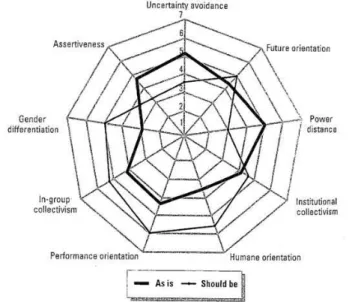This study aims to help international organizations and their employees by providing guidelines for doing business in Japan and South Africa in particular. This study also examines how advanced technology and the media are essential components of cross-cultural communication, used to influence communication between cultures and geographic locations (Steinberg, 2007: 15). The findings of this study aim to improve intercultural competence in both national and international organizations.
Therefore, the management of these organizations should examine the limitations pointed out in this research study and change their policies and procedures to promote and encapsulate a more intercultural and global environment. By signing below, I, Paulene Naidoo, hereby declare that the work that I present in this thesis is based on my own research and that I have not submitted this thesis to any other higher education institution to obtain an academic qualification. First of all, I would like to thank my Lord and Savior Jesus Christ for guiding me and giving me strength, wisdom, determination and endurance throughout the duration of this study.
Thank you for accepting me as your PhD student and for your continued support and your invaluable guidance and advice. Thank you both for always being there for me and providing me with all the love, support, guidance and motivation to keep moving forward.
141 CONCLUSIONS AND RECOMMENDATIONS _____________________________________ 141
The qualitative part of the research will focus on literature in which different aspects of intercultural communication are discussed. Chapter one serves as an introductory chapter and deals with the purpose of the study. It further provides an overview of some of the main theories underlying intercultural communication.
The function or purpose of communication varies from person to person, depending on the situation and the expected outcome of the communication process. The message is the verbal and non-verbal form of the idea, thought or feeling that an individual (communicator) wants to communicate to another individual or group of people (the receivers). An important code or sign system is language, which is an important aspect of the communication process.
Coding and decoding languages are very important aspects of communication that contribute to communication breakdown. Another important aspect of the communication process is context. 2007:76) assert that messages are not transmitted and interpreted in a vacuum.
SOCIAL ENVIRONMENT CONTEXT OF RELATIONSHIP
Due to English syntactic rules, the sentences "The young girl hit the old lady" and "The old lady hit the young girl" have different meanings even though they contain the same words (Alberts et al. Symbols such as the Nike 'swoosh', the Starbucks mermaid or the distinctive three-pointed star Mercedes-Benz in a circle, along with many other logos such as Yahoo!, Google or Coca Cola, is instantly recognized by millions of people around the world, regardless of the language they speak (Samovar et al. Hitchhiker's outstretched thumb, sign with thumb and circle for "OK", a V hand sign that symbolizes peace.
Although eye messages have received little attention from cross-cultural researchers, an African proverb states, "the eye is an instrument of aggression." Interpersonal communication and the transactional model will help in understanding the process of mass communication. Verderber & Verderber add that norms begin to develop early in the life of a group or culture.
In light of the above literature, it is clear that the elements of culture play a significant role in the development of culture. Hofstede (2001:9) defines culture as "the collective programming of the mind which distinguishes the members of one group or category of people from another". The word context can be defined as "the information that surrounds an event, it is inextricably linked to the meaning of the event".
A low context on the other hand is the opposite; the mass of information is communicated in clear code (Samovar et al. Three of the cultural differences that affect listening are (1) language and speech, (2) nonverbal behaviors, and (3) reactions (DeVito, 2011:66 DeVito (2011: 67) adds that in low-context cultures (eg, the United States, Germany, and Scandinavia) listening involves "hearing" what is clearly said in the spoken message.
However, what is even more challenging when listening to nonverbal messages is that different cultures have different meanings for the same nonverbal gestures (eg, thumb and index finger forming a circle means "OK" in America, "money" in Japan. , "zero" in some Mediterranean countries, and "I'll kill you" in Tunisia (DeVito. Communicators from individualistic cultures (eg, the United States) expect responses to be an expression of honest of what their listeners feel South Africa's population is one of the most complex and diverse in the world.
Therefore, if the non-verbal cues are not understood in the context of the communication process, it is inevitable that the communication process will be hindered. 89 The transactional model also focuses on the meaning of the message that is negotiated between the participants.
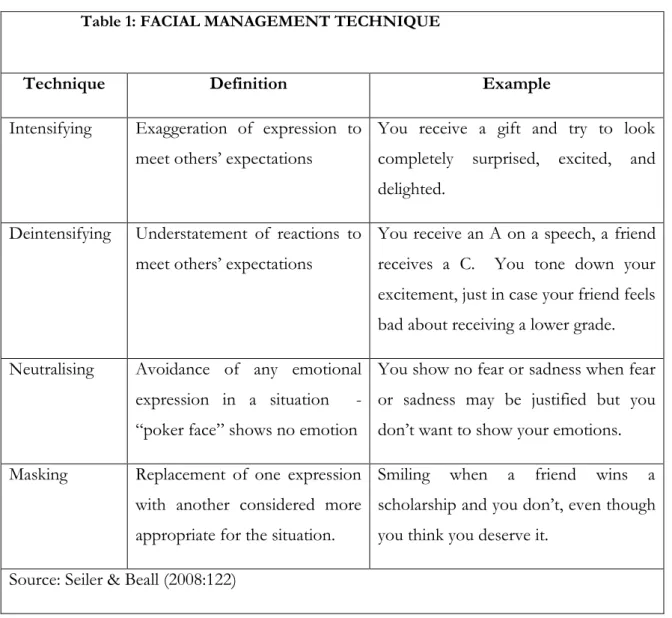
Recipient (Decoder)
Although each element is discussed separately in this study, they are not isolated units; instead, they occur almost simultaneously as the process develops. For example, in an intercultural context, a communicator or sender (Japanese) has an idea in his/her head and then converts (encodes) this idea into a message. He/she then transmits this message to the recipient (South African) by means of personal signs and codes.
The receiver then interprets the message (decodes), according to his understanding, which is based on his cultural status, and conceptual network of knowledge, and in turn responds and gives feedback to the communicator. What is important, however, is whether the correct message is conveyed and whether the desired outcome is achieved in the communication process. In many intercultural communication encounters, the problem or miscommunication occurs between the communicator and the receiver.
Because people cannot transfer meaning from their minds to others, they use signs and codes as explained by Steinberg (2003:13). When verbal signs are spoken and written words and sounds, and non-verbal signs are cues or signals transmitted without the use of sound, both verbal and non-verbal signs cause misunderstandings due to cultural interference. For example, during the communication process between a South African and Japanese, the Japanese communicator may tend to close his/her eyes, and according to the Japanese, he/she nonverbally indicates to the South African that he/she is concentrating on what is being communicated.
However, to the South African person, he/she perceives this non-verbal behavior as rude and impolite and that the Japanese person is not paying attention to what is being communicated. This in itself hampers the communication process, as the same signs have different meanings for both cultures.
Encoder) Sender
This chapter provides a description of the research process and the methodology used to conduct the study. The chapter forms the basis for the analysis and interpretation of the results in the following chapter. A note to respondents was the first part of the questionnaire, which highlighted the purpose of the survey.
The purpose of a pilot study is to improve the success and effectiveness of the questionnaire. Sampling procedures are crucial and become critical factors in the success of the study. Conversely, it is also clear that in total the respondents make use of face-to-face communication when they engage in intercultural communication.
The majority of respondents indicated that face-to-face communication was the most profitable means of intercultural communication as a result of non-verbal cues. However, 22.7% of respondents also indicated that the written (email and fax) method of communication also helps to overcome language barriers. 128 Figure 25 highlights that the majority of respondents (42.3%) stated that the language was the biggest cultural adjustment they experienced abroad.
Based on the above findings, Figure 26 highlights how many respondents felt that their cultural adaptations were positive or negative. The figure below shows that respondents indicated that their culture is more task-oriented. Most respondents indicated that although they are task-focused, this is not always the most appropriate way of doing business.
However, respondents indicated that it is extremely important to build and develop a relationship. On the other hand, the minority (1.2%) of respondents stated that attitude to time and management styles are not important at all in business communication. 52.4% of the respondents pointed out that it is extremely important to accept and recognize the other culture.
The majority (76.2%) of the respondents confirmed that they prefer to learn about other cultures through constant cooperation and communication with another culture. Which of the above methods of communication do you think is the most suitable for communicating with other nationalities?
